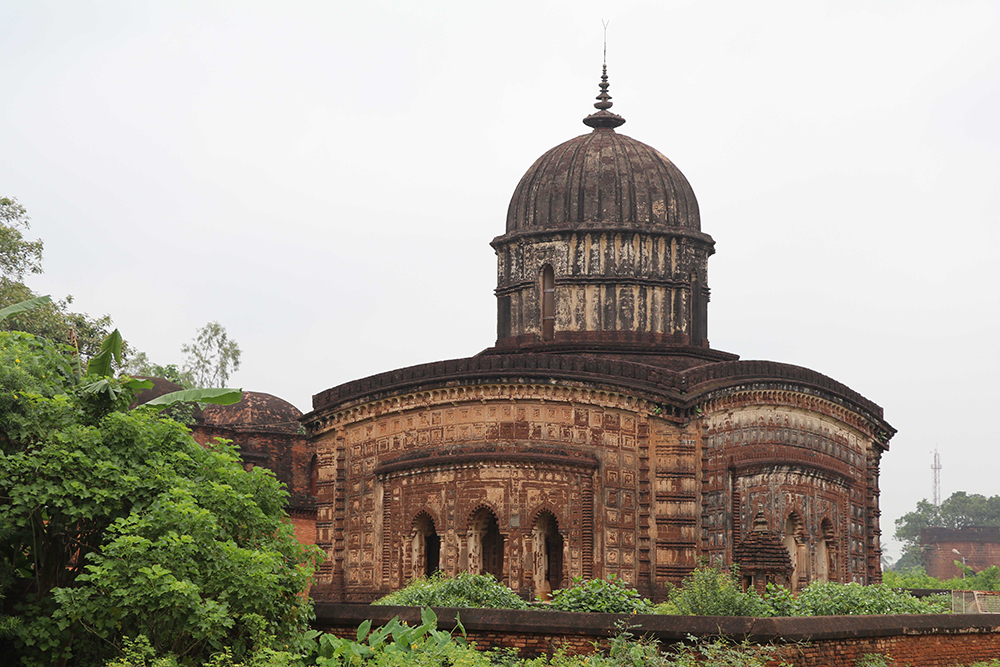

The enchanting town of Bishnupur in West Bengal, India, is celebrated for its unique terracotta temples, among which the Lalji Temple stands as a notable example of the region's rich cultural and religious heritage. The history of tourism at Lalji Temple is deeply intertwined with the history of Bishnupur itself, which dates back to the 17th century when the Malla rulers promoted the arts, culture, and religious activities, leading to the construction of many such architectural marvels.
The Lalji Temple was constructed in the year 1658 AD by Bir Singha II, a Malla king renowned for his patronage of architecture and the arts. The temple is dedicated to Lord Krishna (Lalji is another name for Krishna) and exhibits the exquisite craftsmanship of the era. The terracotta panels that adorn the temple walls illustrate scenes from Indian epics such as the Mahabharata and the Ramayana, as well as various aspects of daily life in the period.
Tourism in Bishnupur gained prominence as scholars and enthusiasts of history and architecture began exploring the terracotta temples in the 20th century. The Lalji Temple, thanks to its aesthetic appeal and architectural intricacy, became a focal point for tourists visiting the region. Over the years, efforts to preserve the temple have seen an increase in tourist activities, with both domestic and international visitors coming to marvel at its beauty.
In recent years, there has been a growing trend in sustainable and cultural tourism. Visitors are seeking authentic experiences that allow them to connect with the local culture and history. Bishnupur, and particularly the Lalji Temple, is experiencing a rise in visitors who are interested not just in the temple's architecture but also in the traditional music, handicrafts, like the famous Bishnupur Baluchari sarees, and the local cuisine.
The temple is surrounded by lush greenery and a serene ambiance that offers a perfect retreat for those looking to immerse themselves in tranquility and spirituality. Guided tours are available, allowing tourists to deeply understand the historical context and artistic significance of the terracotta work.
The annual Bishnupur Festival, held in December, is a significant draw for tourists, where they can experience the culture of the region firsthand. It includes performances of classical music, especially the Bishnupur Gharana of Hindustani classical music, exhibitions of local crafts, and more.
Bishnupur is well-connected by road and rail. The nearest major railway station is at Bishnupur itself, and the town can also be accessed by bus services from Kolkata and other major cities in West Bengal. For those traveling by air, the nearest airport is in Kolkata, which is about 140 kilometers away.
While the best time to visit Lalji Temple is between October and March, when the weather is pleasant, it remains open throughout the year. It is advisable to check with local tourism offices for any changes in timings or for special events that could enhance the travel experience.
Visitors should note that the temple is a place of worship and a historical monument, and hence appropriate decorum and respect should be maintained at all times. Photography may be restricted in certain areas to preserve the sanctity of the site.
With its blend of history, culture, and spiritual significance, the Lalji Temple of Bishnupur continues to be a beacon for travelers from around the world, seeking to explore the past and present of this mesmerizing region.